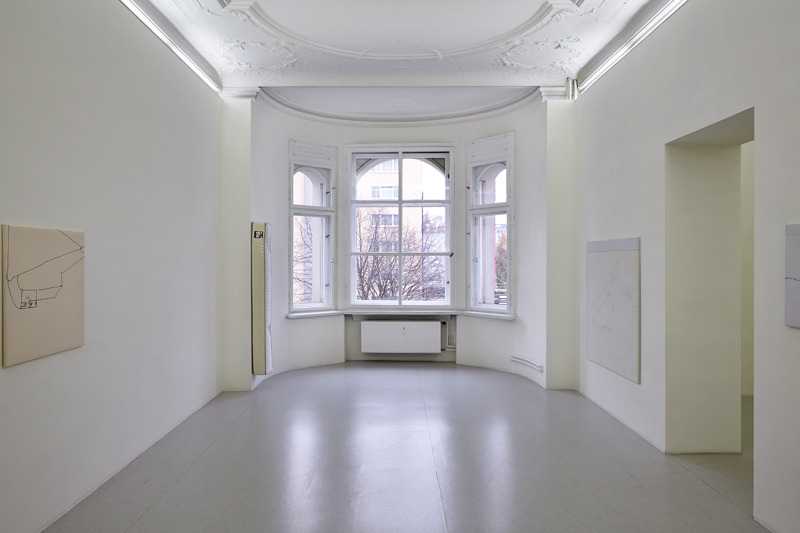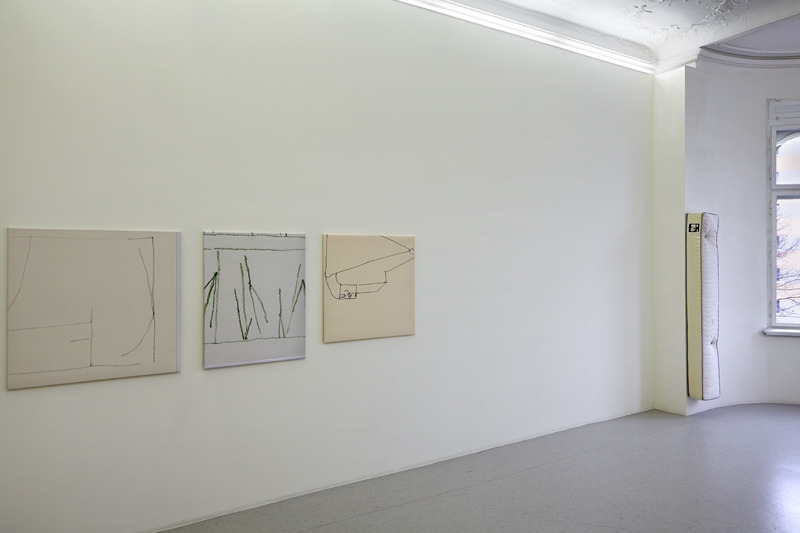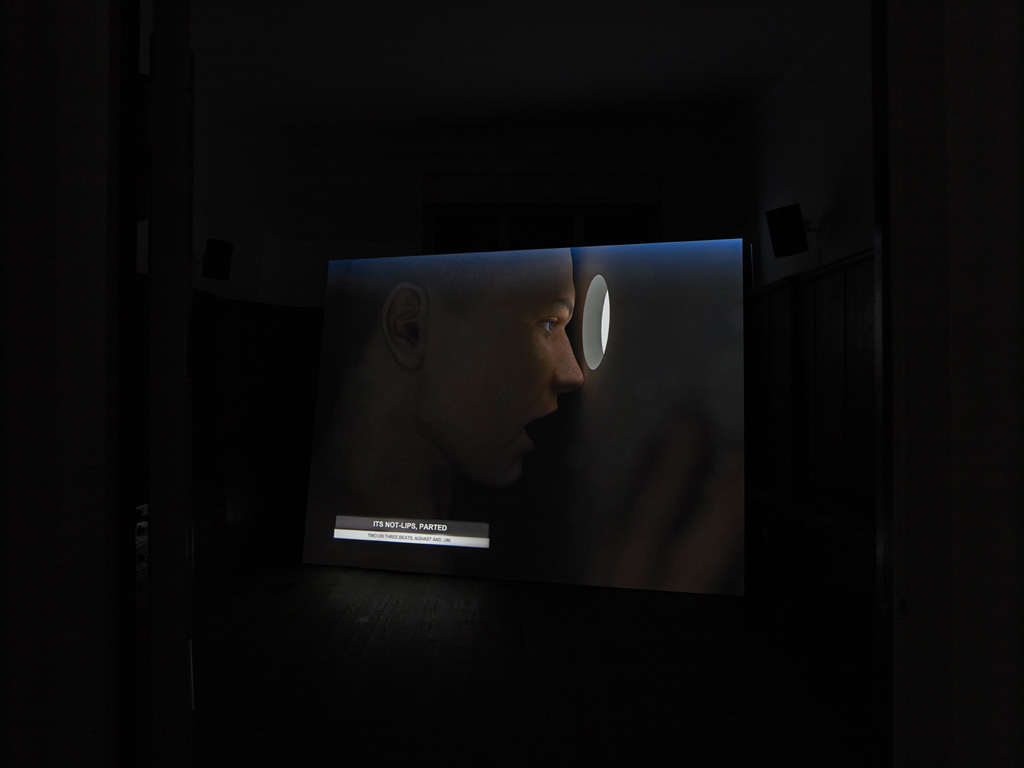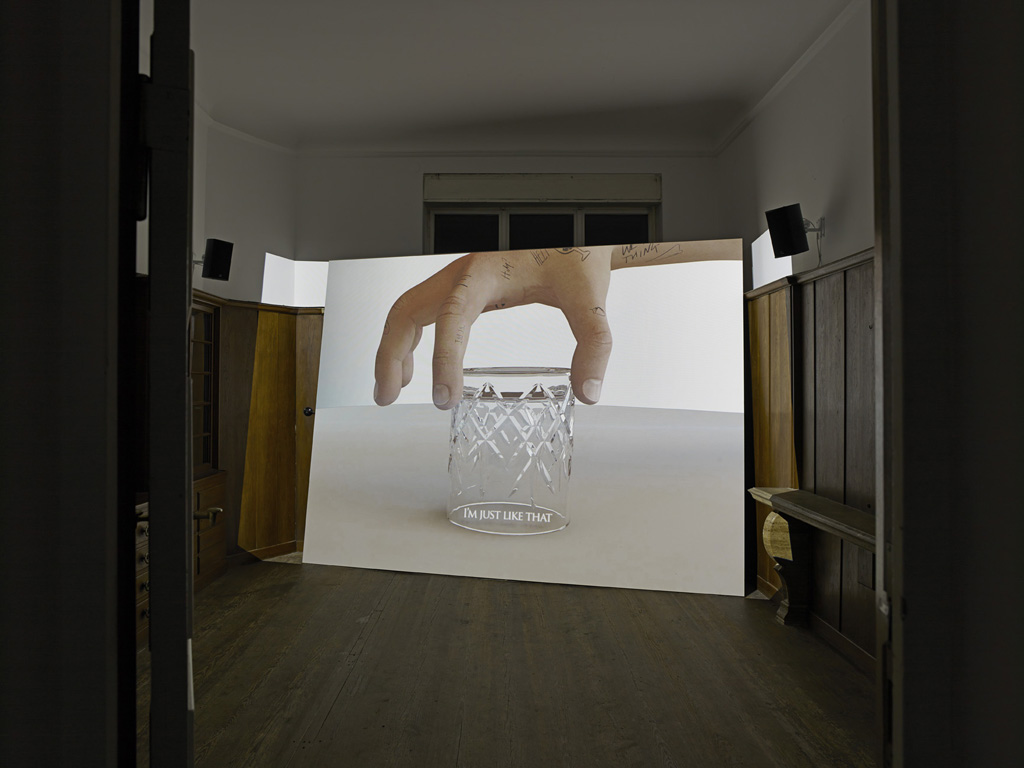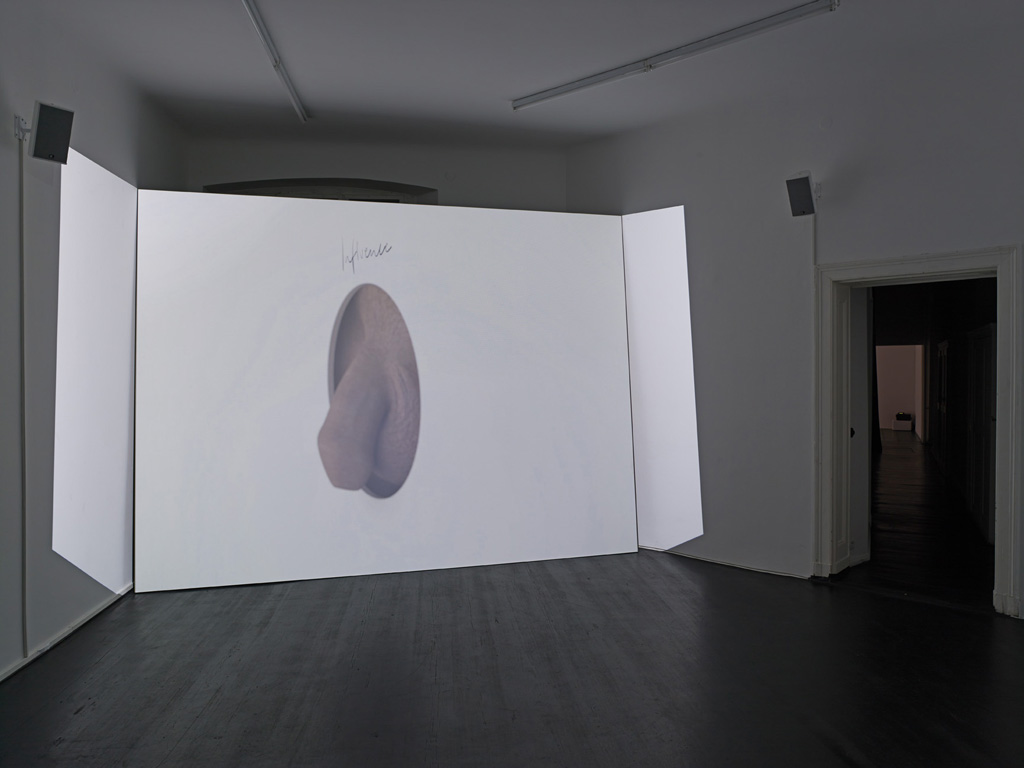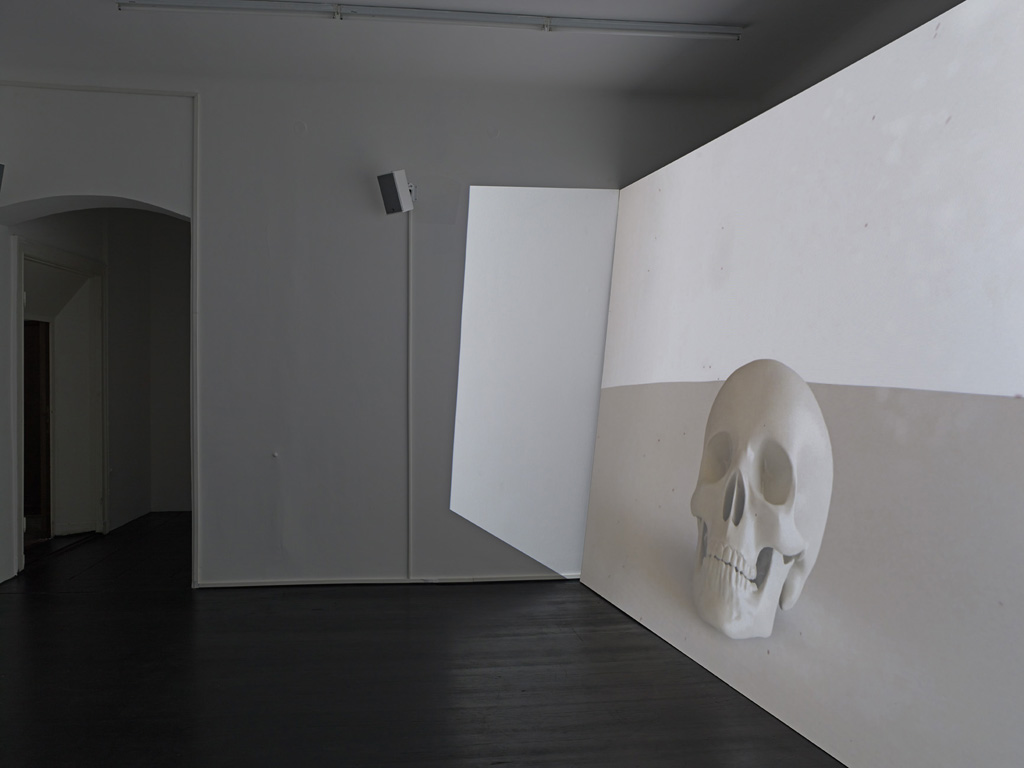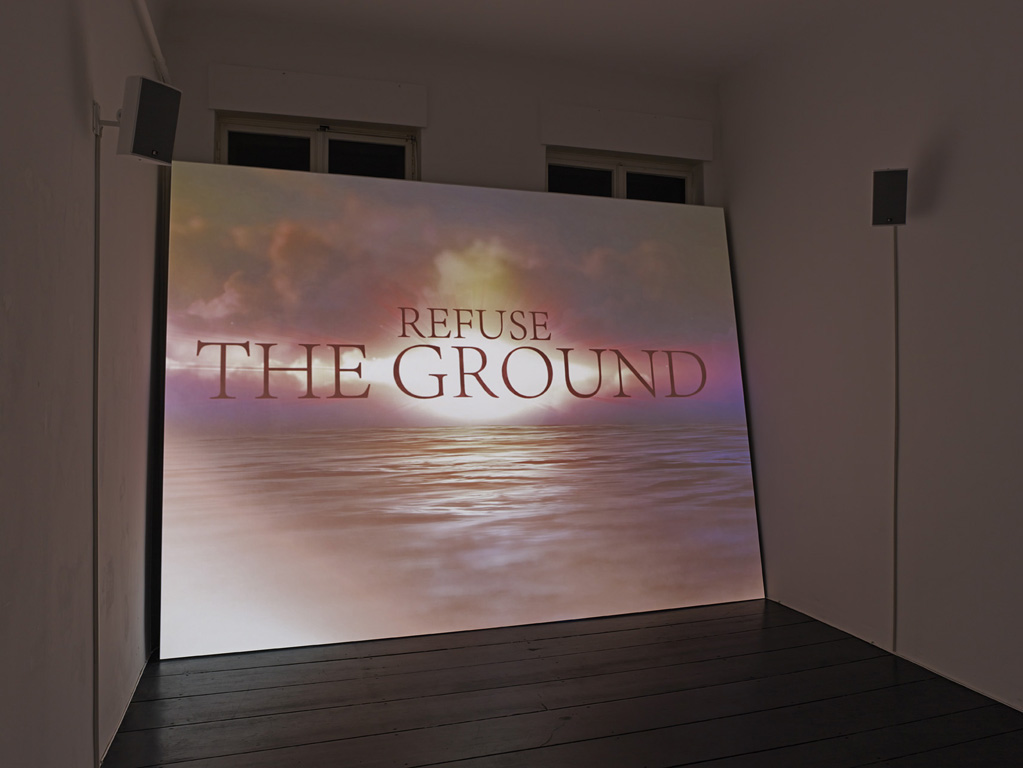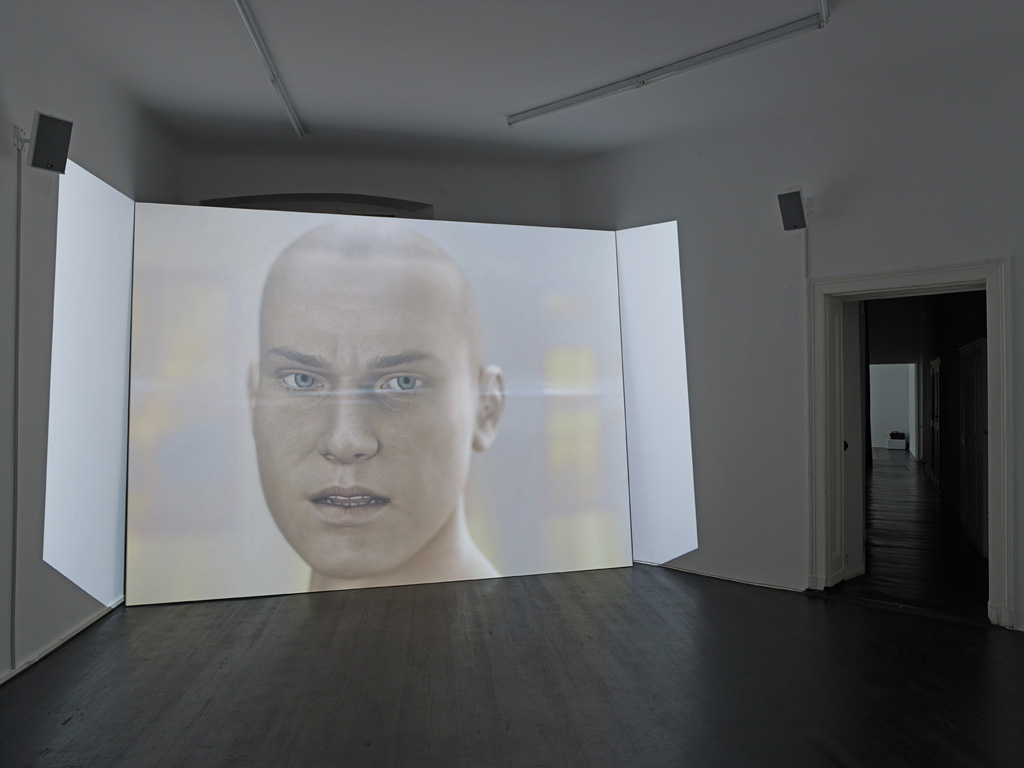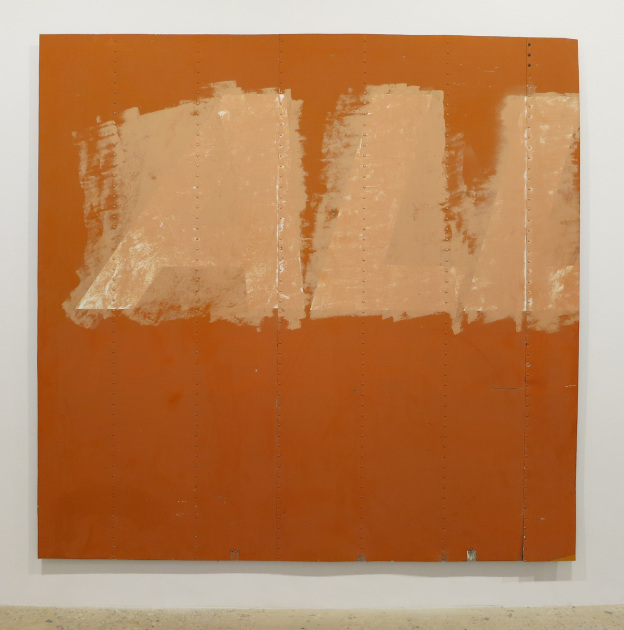© Ming Wong, Life of Imitation, 2009, 3 channel digital video installation, Courtesy of the artist.
53rd Venice Biennale 2009 Series - Ming Wong
Paul Chan (Making Worlds) on Sade, Freedom, Sexuality and Morality
Zilvinas Kempinas (Lithuania) on Sculpture, Senation, Space and Time
Elke Krystufek (Autria) on Female Sexuality and Social Taboo
Andrei Molodkin (Russia) on Negative and Positive
Tozer Pak (Hong Kong) on a Perfect World
Ming Wong (Singapore) on Language and Identity
Among the Asian pavilions in this year’s Venice Biennale, the real surprise comes from Singapore’s A Life of Imitation, curated by Tang Fu-Kuen, in Palazzo Michiel del Brusa. A series of poster paintings in the style of the 1960s, a photo collection of disappeared cinemas, re-interpretation of famous scenes form classical movies, the artist Ming Wong (b. 1971) creates digital media installations that explore slippages in language, performativity and cross-cultural experiences through the appropriation of iconic moments in world cinema. Cinema as a collective memory also becomes a way of articulating the fluidity and conflicts of different gender, cultural and identity roles in a multiracial society such as Singapore.
In the interview, Ming Wong talks to us about Language and Identity.
Selina Ting
Editor
Paris, 2009 summer
MW– Ming Wong
ST – Selina Ting for initiArt Magazine
ST: We all know that Singapore is a multi-ethnic country consisted mainly of Chinese, Malay and Indian. A small island with a 4.8 million population, yet you have four official languages, English, Malay, Chinese and Tamil, it’s such a highly cosmopolitan and diverse place to live. Can you take yourself as an example to share with us this diversity? (Such the history of your family, what kind of education, schools, friends you have, your cultural hybridity and recognition, etc.)
MW: When i was growing up the population was only 2.5 million. My family history in Singapore is typical of many of my generation. My paternal grandparents migrated to Singapore from Guangdong in Southern China, and they and their children went through the Japanese Occupation during WWII. My mother was born in Malaysia, and came to Singapore to work where she met my father. I was born in the 70s, a few years after Singapore became independent in 1965. I went to a catholic missionary primary school, then later to a 'good' state school where a lot of the alumni would go on to work for the government. My parents learnt Malay in school, the national language at the time, whereas i learnt Mandarin as a second language.
ST: You were born in 1971, six years after the independence of Singapore, and you grew up under the government of Lee Kuan Yew (Prime Minister 1965 – 1990). In the 70s and 80s, Lee’s policy was preoccupied with the creation of a unique Singaporean identity, one which heavily recognized racial consciousness within the umbrella of multi-culturalism. Today, what does it mean to be a "Singaporean"?
MW: This 'racial consciousness' was inherited from British colonial rule, where the races were kept separated. After the racial riots in the 60s, the new Singapore government introduced measures to integrate the races, for instance, having racial quotas for social housing. The categories CMIO (chinese, malay, indian, others) became ubiquitous in social administration. Racial and religious issues are scrutinised closely in the arts, even today. New immigrants mainly from mainland China and India in the past few years, contribute to the new generation of 'Singaporeans'. I don’t know what it means anymore to be a Singaporean. Things have always changed and are changing, the 'landscape' and the 'mindscape'.
ST: One of Lee’s policies that obviously related to you and your work is the discourage of non-Mandarin as the “Mother Tongue” of ethnic Chinese, such as the cancellation of TV broadcast in non-Mandarin dialects. How was your personal experience in this regard? Do you speak Chinese or other Chinese dialects? How do you communicate with, say, your grandparents? How good is your “Singlish”? Looking back, how do you access this kind of top-down social identity policy?
MW: I am sad that my Cantonese has degenerated, and its typical that in subsequent generations, dialects have been lost. I see this as a loss of identity, it cuts me off from earlier generations, the gap is wider. I used to only speak Cantonese to my grandparents and their generation, who are now dead. When i started writing for the 'english' language theatre in Singapore, i wrote for characters who spoke different languages, including Singlish. I found languages and their idiosyncrasies to be a tool to get straight to the solar plexus of an audience, a form of identification which is at once emotional and deeply imbedded in once's psyche and being. At the time, theatre was one of the few arenas of exploration, you wouldn’t have been able to do the same on TV for example. The multitude of languages, influences and accents in the country are contrary to a unifying standard 'English'. I think this helped me develop my sensitivity for communication beyond language barriers.
ST: Your work goes back to the golden decades of Singaporean Cinema in the 1950s and 1960s, the pre-independence period. Can you tell us more about this rather unknown period in history? What was the uniqueness of it?
MW: Chinese producers (who owned the cinemas) invited film directors and cameramen from India (where there was already a mature film industry) to make films in Singapore with local Malay performers (from Malay stage traditions). This kind of cultural diversity in the film industry at that time was unheard of. The influences in the films came from Hollywood, Europe, Japan, Bollywood, China, transposed to a local context, watched and enjoyed by all regardless of race or language.
ST: What about the subject matters of the films produced in that period?
MW: The films covered everything from slapstick comedies to historical epics, there were detective thrillers and lots of musical romantic comedies, melodramas with music were popular. Horror movies were a staple, with the tropical jungle as a backdrop. The Pontianak or Malay Vampire and the ‘Oily Man’ became everybody’s nightmare figure. There were also modern ‘urban’ dramas that dealt with the modernisation of the country, looking at the relationship between the urban city-life and rural countryside.

© Ming Wong, Life of Imitation,2009, 3 channel digital video installation, courtesy of the artist.
ST: In your work, for example, Life of Imitation which features 3 actors from the 3 main ethnic groups in Singapore (Chinese, Malay, Indian) taking turns to play a black mother and her ‘white’ daughter in a scene from Douglas Sirk’s Hollywood melodrama Imitation of Life (1959). What are your ideas and cultural politics behind these swaps of identity, speeches, relationship?
MW: The key moment in the scene is when the daughter turns to the mirror and declares to her black mother that she is 'white'. I used 3 actors from Singapore for the roles, and they are all neither white, or black, nor are they female, or from Hollywood, and they are the wrong age to play either mother or daughter, a total mis-casting.
© Ming Wong, In Love for the Mood, 2009, 3 channel digital video installation, 4 mins loop. Courtesy of the artist.
ST: Do you usually use the strategy of “total mis-casting” in your work? What about the reversal of having a Caucasian actress double-acting in In Love for the Mood (2009), as the hero and the heroine and speaking a language that she doesn’t speak in real life?
MW: I put the actress in a similarly vulnerable position that I take up when I act in my work. This work was made for the Venice Biennale for a predominantly European audience, so I wanted to cast a Caucasian actor in it, as a more direct source of identification for the Venice audience. I chose a Chinese film that was the most well known to a European art crowd, “In the Mood for Love” by Wong Kar-Wai.
© Ming Wong, Four Malay Stories, 2005. 4 channel digital video installation, black/white, looped DVD, 25 mins each. Courtesy of the artist.
ST: In Four Malay Stories where you acted yourself all 16 characters. What’s the idea behind one single actor to play all the roles? Can you share with us your experience of making and acting in this video?
MW: In Four Malay Stories I took on the responsibility of representing the Malay community of the time, so I had to be everybody – man, woman, young, old, poor or rich. This was the first work in which I acted out the roles myself. I had to repeat each line in Malay over and over again, which I captured on camera, until I got it almost perfect, before moving on the next line or shot. I can’t speak Malay fluently, but I can suprise my Malay friends by quoting from the movies they hold so dearly to their hearts.
ST: In your work, language becomes a tool to reveal conflicts of social roles and identities. It is further complicated by different artistic devices, such as transvestite, trans-racial, parroting, rehearsals, film-within-film, reverse of the film titles, etc. How do you interpret the relationship between language and identity?
MW: I find it hard to answer this. All i can say is that, everything is tied up together. Spoken words play only a minor part. Quite a lot depends on who is looking, and what is able to be seen or unseen. There's quite a lot that goes beyond language. I feel this is becoming more apparent now with globalisation. A lot of conventions are being overturned, so there are no rules anymore.
ST: So, language is longer one of the social construction of our cultural identity? Is your total miscasting a way of breaking down, deconstructing this conventional bound between language and identity?
MW: Besides miscasting, there are also breakdowns in conventional filmmaking methods, as well as ways of presenting moving image to an audience. There is the breakdown of illusions in the editing, directing, acting, styling, etc. Beyond questions of ‘language’ and ‘identity’, is the question of what is filmic language, and what is the role of the audience, questions that are asked in film and performance circles as well. How are we supposed to act or react to a film installation? Where am I supposed to look at?
ST: How did you conceive your show in Venice?
MW: I worked very closely with the curator Tang Fu-Kuen, who is better known in the performance and dance circles. We both have a love for the cinema, especially the film culture in pre-independent Singapore, so we were both drawn to this topic when conceiving our ‘national pavilion’. We look back at our past to ask questions about the future, not just for Singapore, but for the world, using the Singapore situation related to hybridity and the flux in identity. It has struck a chord with audience, a lot of places in the world are going through tremendous change, and along with it a crisis in identity. So they totally identify with the issues that emerge in our exploration.
ST: Is there any imagined audience in your mind when you were preparing the show?
MW: I take into consideration what language barriers there might be. I don’t agree with a lot of work out there that supposes you can understand English. I don’t agree with work where there is an authoritative voiceover in English. In the show in Venice you can find items in Tamil, Malay, Cantonese, Italian, Japanese, French, even Singlish and Flemish!
ST: Since when are you working in Berlin? Why did you move there? How do you find it?
MW: I moved to Berlin 2 years ago to do an artist residency at the Kunstlerhaus Bethanien, and then decided to be based here. Before that I lived in London which became too expensive. Berlin seemed to be a better option at the time.
ST: Everything goes well?
MW: At the moment, things are very uncertain! I wish I spoke fluent German!
About the Artist:
Ming Wong was born in 1971 in Singapore. He currently lives and works in Berlin.
Originally trained in traditional Chinese painting, Wong also made a name for himself as a playwright in the Singapore theatre scene, before obtaining his Masters in fine art media at the Slade School of Art in London. He recently presented solo exhibitions at MKgalerie in Berlin and Rotterdam, and Gallery 4A in Sydney; his works have also been shown in the past year at the Jakarta Biennale, Images Festival in Toronto, Art Forum Berlin, Preview Berlin, ZKM Center for Art & Media in Karlsruhe, Centro Cultural Montehermoso in Vitoria-Gasteiz, Singapore Art Museum, S1 Artspace in Sheffield, Galleria neon campo base in Bologna, etc.
www.mingwong.org
THANKS TO http://www.initiartmagazine.com/interview.php?IVarchive=12
 Alighiero Boetti – Map of the World, 1971-72, embroidery
Alighiero Boetti – Map of the World, 1971-72, embroidery

